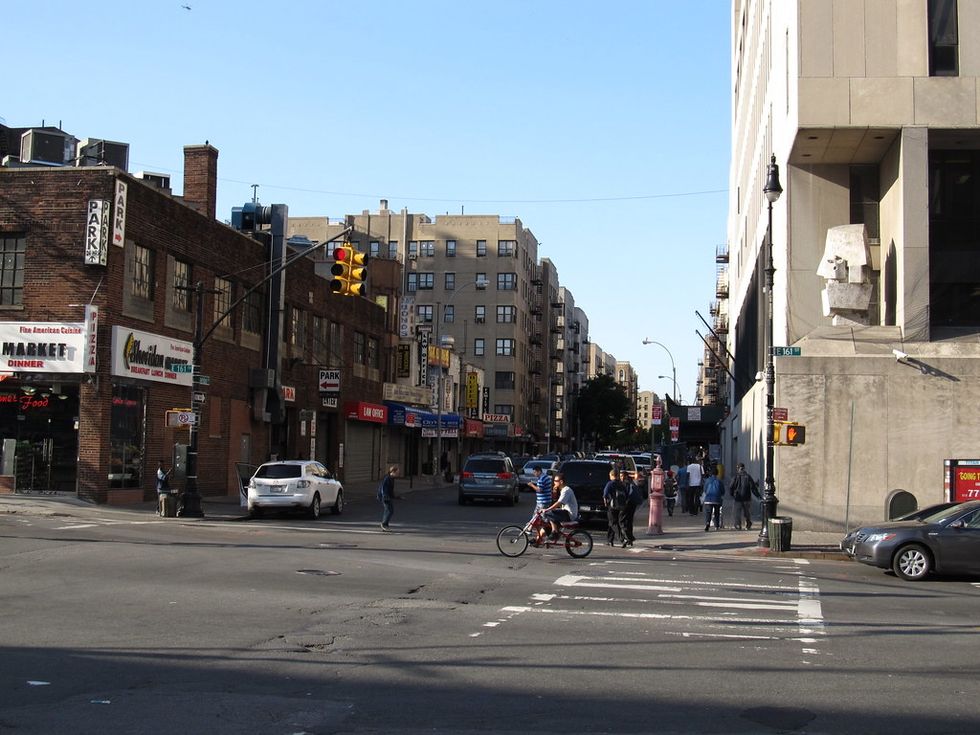We curiously explored the blocks of Arthur Avenue on Friday night. We feasted on delicious spaghetti donuts, tacos, and grapefruit mocktails at Smorthasburg food festival in Brooklyn on Saturday morning. By Sunday evening, we all subtly exposed our map-reading shortcomings with one another, struggling to navigate the route from Fordham Road Station to Brooklyn; nevertheless, my friends and I finally made it to DUMBO, a lowkey, trendy neighborhood – just bordering the Brooklyn Bridge. It was our first weekend at college, and we were all simultaneously exhausted and thrilled. It was a weekend of trials and triumphs amidst a newfound college independence far away from all the comforts we were familiar with back home. Awkward small talk during freshman orientation gradually led to 2AM laughs on the floor of our dorm.
I have met some amazing new people here in the Bronx. However, the longer I am here, the more I am beginning to acknowledge how invisible forces – like stereotypical biases towards race and class differences – interplay and influence our interactions between the local Bronx and Fordham community. Whenever I would tell people that I was attending college in the Bronx, everyone kept reminding me to be careful and that the Bronx is a very notoriously sketchy place. This interaction always takes me back, and makes me uncomfortable. Why is it that there is always this criminalized perception of communities predominantly of people of color like the Bronx? On the other hand, why is it that rural, prep-school communities of predominantly white people are inherently perceived as safe?
Historically, this stereotypical bias traces back to systematic racial redlining, white flight, and gentrification of communities of color like the Bronx. Beginning in the 1930s, FDR installed loan programs, offering financial aid to citizens looking to buy a home. However, the US government established color-coded maps – solely based on race – to decide who was eligible to receive loans. Black, Latinx, and other communities of color were forced into the red zones – where home loans were conveniently available – while white people were systematically placed into green zones – where it was very easy to receive home loans from the government. "Early suburb developers instituted explicitly racist policies," as communities of color were discriminated and not allowed to buy homes within the green zone." Because of this, "from 1934 to 1968, a whopping 98% of home loans were given to white families."
While white wealth and property value increased in green zone neighborhoods – bringing in more capital and industry opportunities exclusively for their community – red zone neighborhoods deteriorated and poverty struck due to financial insecurity. Ultimately, redlining policies transfigured into a tactic to oppress communities of color and further perpetuate the cycle of white privilege in the US. Despite eventually dismantling these racist policies, people of color did not have enough money to move out of red zone neighborhoods, so this discriminating cycle of redlining and segregation still continues today.
When attending a school like Fordham that resides within the Bronx community, it is important to dismantle criminalized perceptions of the local Bronx community by engaging in meaningful, profound conversations on the historical redlining of predominantly POC neighborhoods like the Bronx, and educating your friends and family on how that racial bias has shifted into contemporary day. Don't get me wrong – I love the vast selection of Italian foods on Arthur Avenue just as much as the next person. However, being that the Bronx is so multicultural, it's important that we expand our diverse food palette and step outside our predominantly white bubble. If we exclusively remain within the bounds of Arthur Avenue, we're implicitly shutting out other local businesses that are run by families of color, perpetuating this systemic cycle of racial redlining without even knowing. Accordingly, next time you step outside the campus bubble, just remember to keep all of this in mind and be open to trying new cultural experiences within the multicultural Bronx community!

















